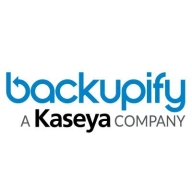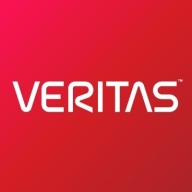

Veritas CloudPoint and Backupify Google Workspace Backup are two competitive products in the cloud data protection space. Backupify has the upper hand in integration capabilities and user-friendliness, while CloudPoint provides superior data management functionalities.
Features: Veritas CloudPoint provides strong data protection, extensive compatibility, and scalability suitable for complex environments. It is designed for enterprises needing robust data management. Backupify Google Workspace Backup focuses on streamlined integration with Google services, offering efficient backup and recovery processes. It provides straightforward features tailored to Google Workspace users.
Ease of Deployment and Customer Service: Backupify is praised for its simplicity in deployment, especially for Google Workspace, and benefits from responsive customer support. Veritas CloudPoint, on the other hand, requires a more complex initial setup due to its wide feature set but includes comprehensive support options for intricate configurations.
Pricing and ROI: Veritas CloudPoint involves a higher initial cost with its enterprise-grade features, justifying the potential long-term value in data management and protection. Backupify presents a more cost-effective option with attractive ROI for Google Workspace users, balancing cost with features effectively.

Backupify Google Workspace Backup provides essential data protection for Google Workspace users, ensuring continuity and security through comprehensive backup and restoration capabilities.
Designed to meet the needs of businesses relying on Google Workspace, Backupify Google Workspace Backup offers automated data protection, minimizing risks of data loss and ensuring compliance with industry standards. It supports seamless restoration functionalities, making it easier for IT administrators to manage and recover data efficiently, while also providing secure storage options to preserve data integrity.
What are the key features of Backupify Google Workspace Backup?In the healthcare sector, Backupify Google Workspace Backup ensures the protection of patient records, while in finance, it secures sensitive financial data, meeting specific industry compliance requirements. Schools use it to safeguard academic information, ensuring educational continuity and data availability.
With Veritas CloudPoint, you get the visibility and control from one intuitive central dashboard to confidently manage and easily orchestrate enterprise data protection for your business data consistently across the broadest range of applications and workloads, in both private and public clouds, helping you to transform your organization into a confident multi-cloud digital enterprise.
We monitor all Cloud Backup reviews to prevent fraudulent reviews and keep review quality high. We do not post reviews by company employees or direct competitors. We validate each review for authenticity via cross-reference with LinkedIn, and personal follow-up with the reviewer when necessary.